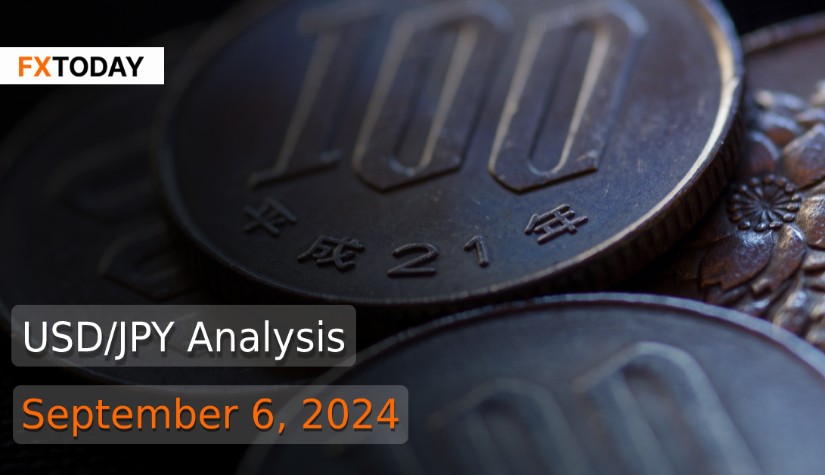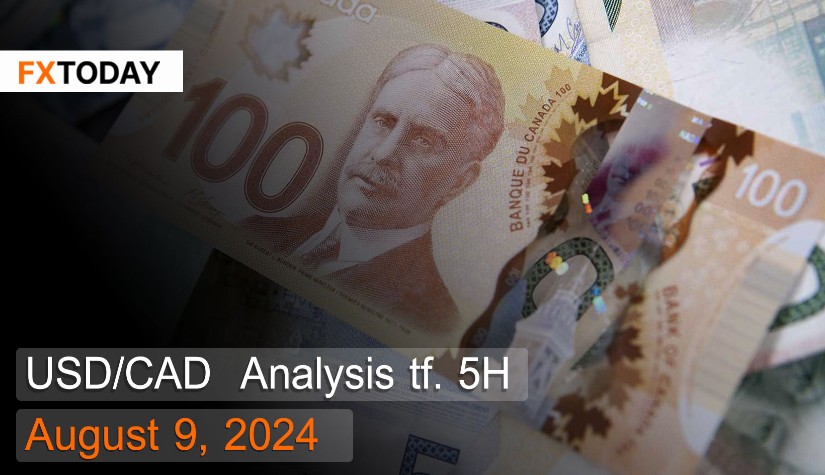Tokyo Core Inflation Surges for Fourth Month; BOJ Rate Hike Expected
In August, core inflation in Tokyo rose for the fourth consecutive month, surpassing the Bank of Japan's 2% target. The Tokyo core consumer price index (CPI), excluding volatile fresh food prices, increased by 2.4% year-on-year, exceeding the forecast of 2.2% and the 2.2% rise in July. The inflation increase in Tokyo is attributed to the removal of government subsidies on utility bills and higher rice prices due to severe weather.
The Bank of Japan (BOJ) is anticipated to raise interest rates further if inflation continues to rise, driven by wage growth and increased private consumption. The BOJ recently ended negative interest rates and raised its short-term policy rate to 0.25%, moving away from a decade of radical stimulus measures.
Japan's unemployment rate rose to 2.7% in July from 2.5% in June, while the jobs-to-applicants ratio improved slightly. Inflation-adjusted wages grew 0.4% in July, slower than June's 1.1% increase, mainly due to fewer summer bonuses. Despite this, nominal wages increased by 3.6%, the largest rise since 1997.
Consumer spending in Japan increased by just 0.1% year-on-year in July, falling short of the 1.2% forecast and showing a 1.7% decrease month-on-month. This cautious spending, partly driven by higher prices, might complicate the BOJ's plans to raise interest rates further. The weak consumer spending contrasts with a slight improvement in economic assessments and hints at potential issues in the economic recovery.
Economic growth for the April-June quarter is expected to match initial predictions, with GDP likely expanding by 3.2% annually. Meanwhile, corporate spending on plant and equipment grew by 7.4% year-on-year in the April-June quarter, indicating strong domestic economic recovery and supporting potential interest rate hikes. This data, along with a factory survey showing a slower contraction in manufacturing activity, suggests an improving economic outlook despite weak export performance.
Japan's factory activity showed signs of recovery in August, with the manufacturing PMI rising to 49.8 from 49.1 in July, though it remains below the growth threshold. Output and new orders improved, but demand remains weak in key export markets, affecting overall performance. Firms have been raising prices due to higher input costs, though at a slower rate, while maintaining a positive outlook for future sales and demand.
Japan's budget request for the next fiscal year has reached a record 117.6 trillion yen ($811.93 billion), driven by rising debt-servicing costs and the challenge of curbing spending. This increase comes as the Bank of Japan moves away from its long-standing stimulus measures, meaning the government can no longer rely on low borrowing costs from the central bank.
A leadership contest within Japan's ruling party could further complicate efforts to restore fiscal discipline. The upcoming vote for a new party leader, who will likely become the next prime minister, might lead to a snap election, potentially affecting fiscal policy continuity.
In August, U.S. job growth is expected to have picked up, with the unemployment rate forecast to fall to 4.2%. This decline would suggest a controlled slowdown in the labor market and strengthen expectations of a quarter-point interest rate cut by the Federal Reserve this month. The anticipated report from the Labor Department is expected to ease recession fears, which had been heightened by July’s jobless rate increase to 4.3%, a near three-year high.
Treasury Secretary Janet Yellen emphasized that despite recent slowdowns, the U.S. labor market remains healthy. She noted that July's 4.3% unemployment rate is still low by historical standards. Yellen highlighted that while job creation has slowed, it is sufficient to absorb new labor market entrants, with robust economic growth and solid consumer and investment spending. As a result, the USD/JPY pair is anticipated to continue trading within its current broad range, potentially moving towards a slightly lower range in the near term.
Data for Technical Analysis (15Min) CFD USD/JPY
Resistance : 142.33, 142.40, 142.52
Support : 142.09, 142.02, 141.90
15Min Outlook
Source: TradingView
Buy/Long 1 If the support at the price range 141.89 – 142.09 is touched, but the support at 142.09 cannot be broken, the TP may be set around 142.33 and the SL around 141.79, or up to the risk appetite.
Buy/Long 2 If the resistance can be broken at the price range of 142.33 – 142.53, TP may be set around 142.75 and SL around 141.99, or up to the risk appetite.
Sell/Short 1 If the resistance at the price range 142.33 – 142.53 is touched, but the resistance at 142.33 cannot be broken, the TP may be set around 142.01 and the SL around 142.63, or up to the risk appetite.
Sell/Short 2 If the support can be broken at the price range of 141.89 – 142.09, TP may be set around 141.67 and SL around 142.43, or up to the risk appetite.
Pivot Points Sep 6, 2024 07:24AM GMT
|
Name
|
S3
|
S2
|
S1
|
Pivot Points
|
R1
|
R2
|
R3
|
|---|---|---|---|---|---|---|---|
| Classic | 141.7 | 141.9 | 142.01 | 142.21 | 142.32 | 142.52 | 142.62 |
| Fibonacci | 141.9 | 142.02 | 142.09 | 142.21 | 142.33 | 142.4 | 142.52 |
| Camarilla | 142.04 | 142.06 | 142.09 | 142.21 | 142.15 | 142.18 | 142.2 |
| Woodie's | 141.66 | 141.88 | 141.97 | 142.19 | 142.28 | 142.5 | 142.58 |
| DeMark's | - | - | 141.96 | 142.19 | 142.27 | - | - |
Sources: Investing 1, Investing 2
















